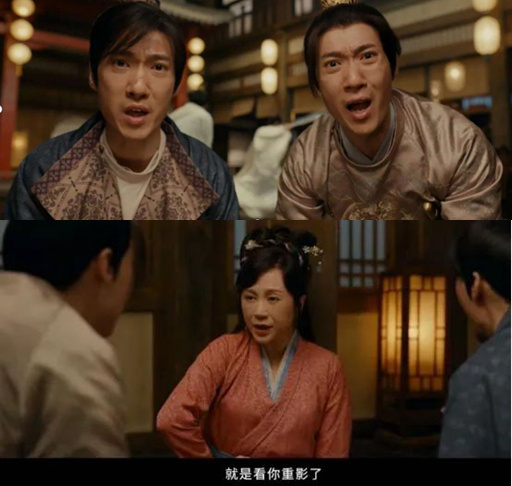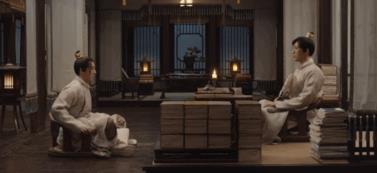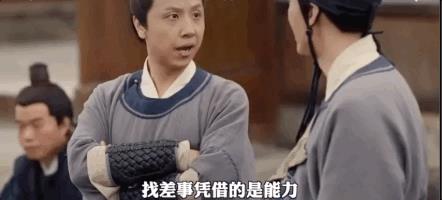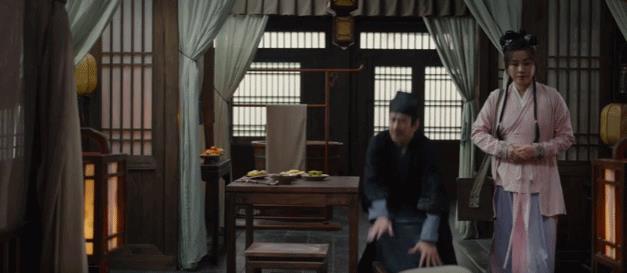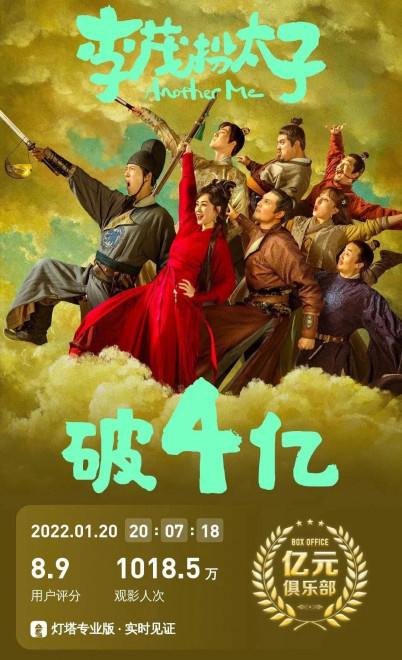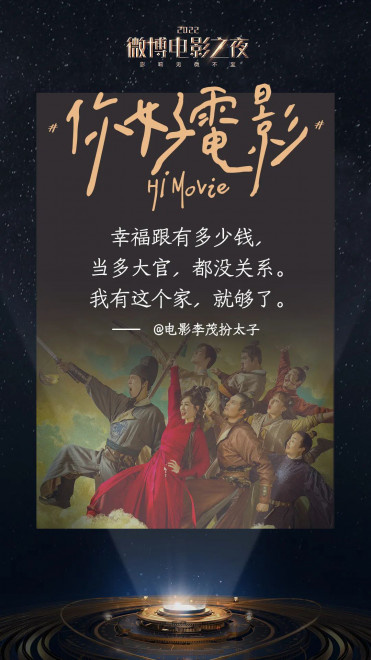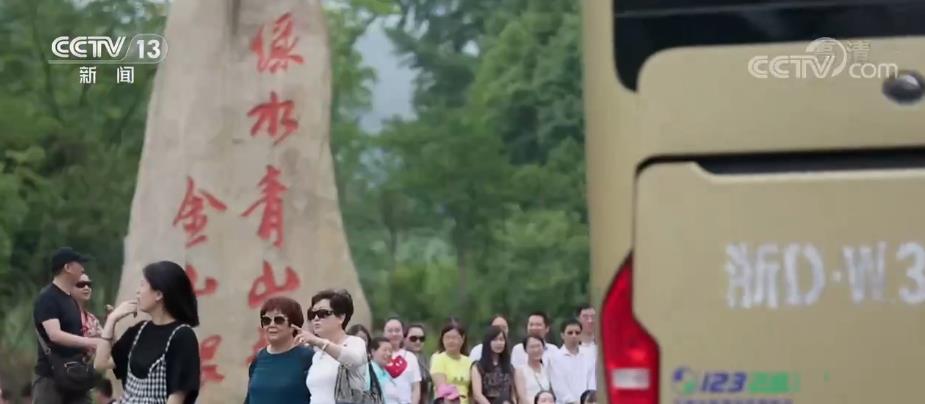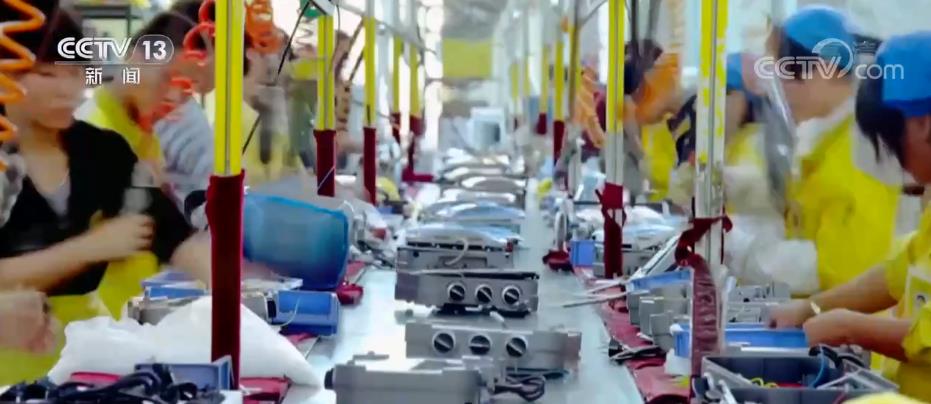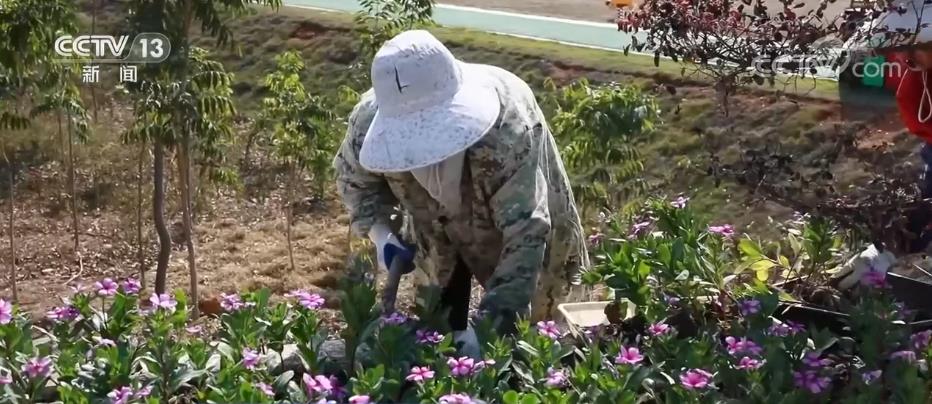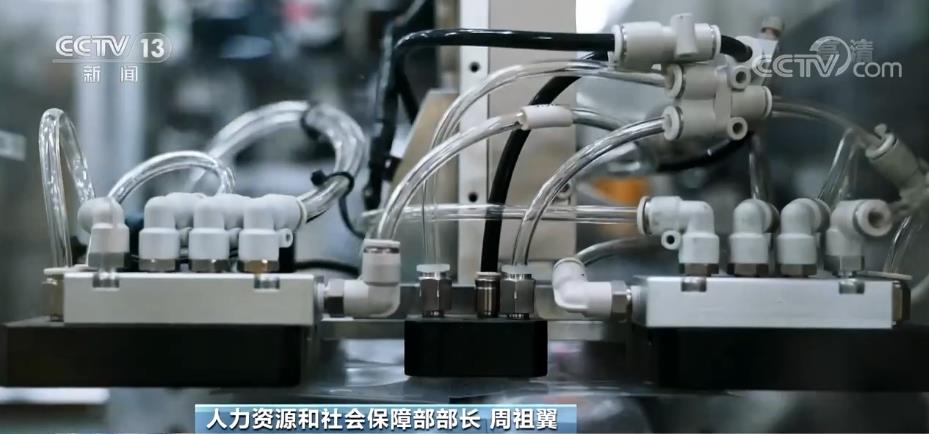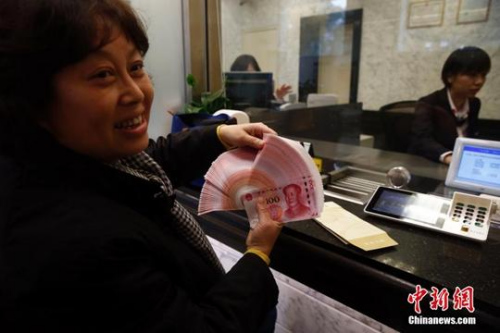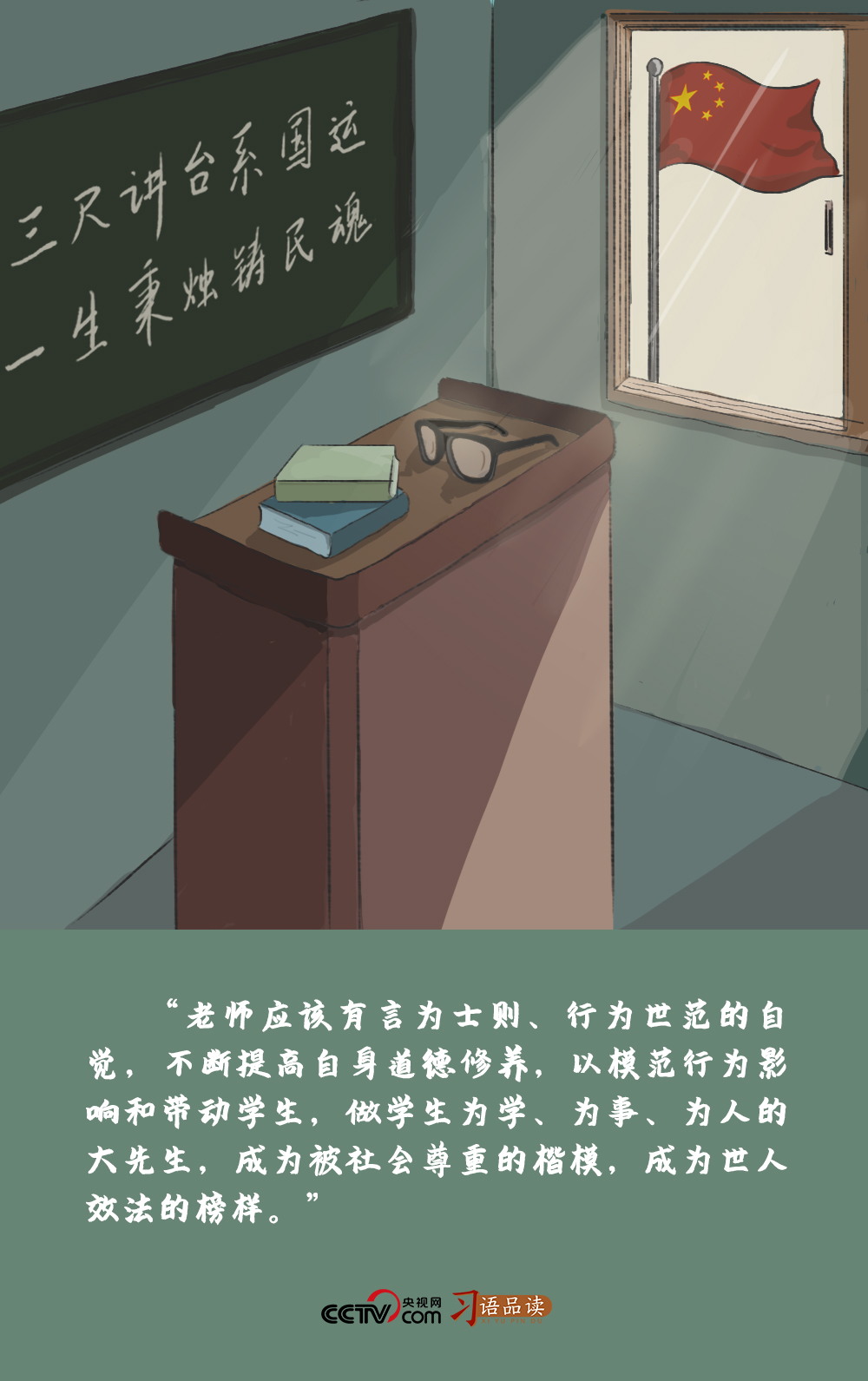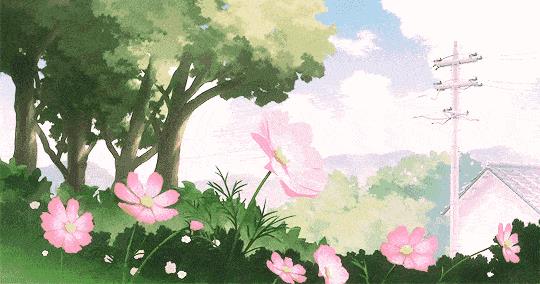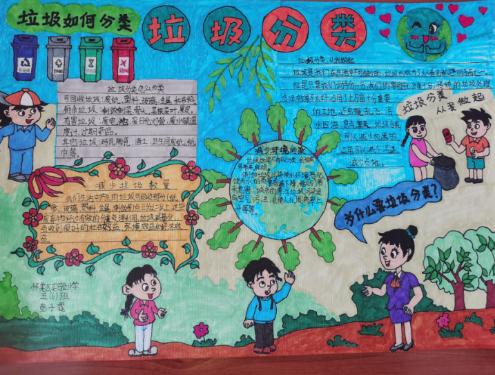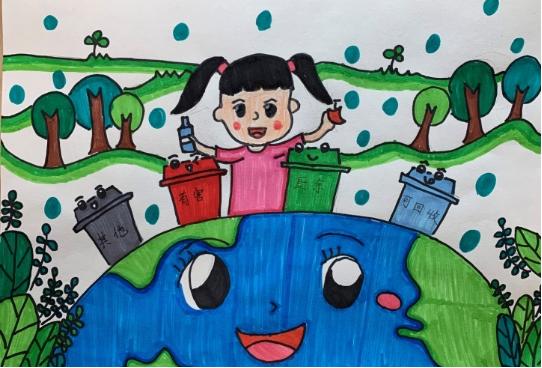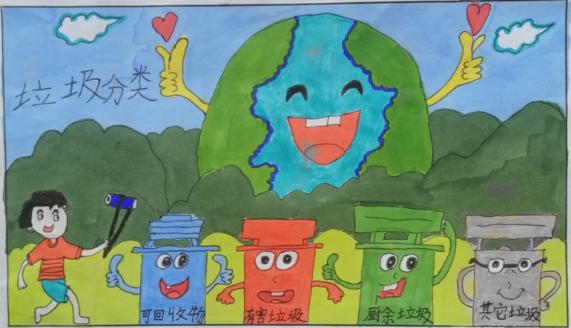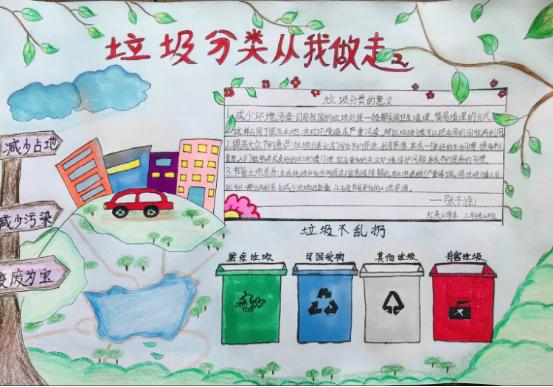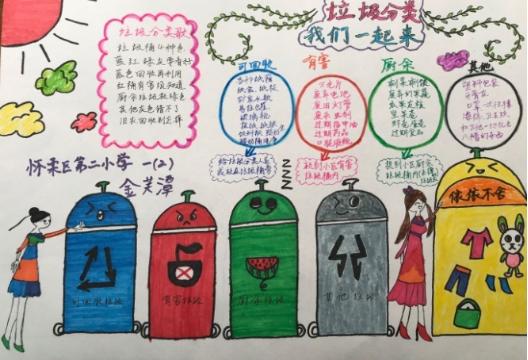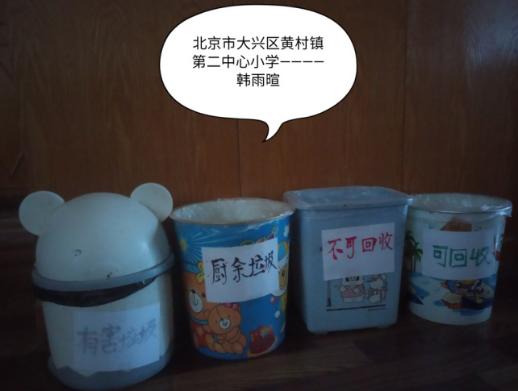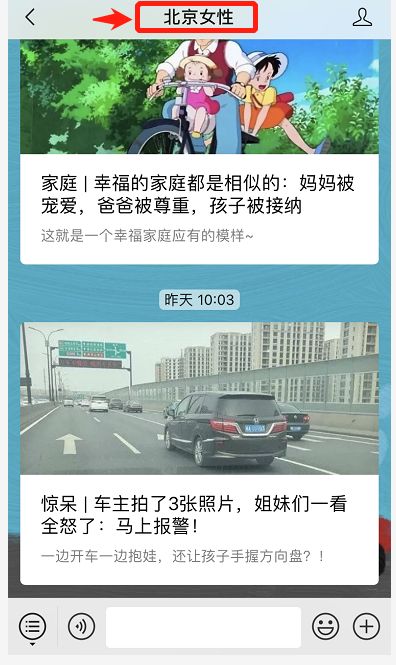() The business review of the Board of Directors in 2022 is as follows:
I. The industry in which the company is located during the reporting period.
(a) the basic situation of the company’s industry
According to the classification standard of National Economic Industry Classification issued by the National Bureau of Statistics, the company’s industry belongs to the sub-industry of medical diagnosis, monitoring and treatment equipment manufacturing under the item of "medical instruments and equipment manufacturing" in the 35th category of "professional equipment manufacturing". According to China Securities Regulatory Commission’s Guidelines for Industry Classification of Listed Companies (revised in 2012), the company belongs to the special equipment manufacturing industry (classification code: C35).
Medical devices are closely related to human life and health. Within the scope of conditions, patients naturally tend to get better medical services. In order to improve the efficiency and effect of examination, surgery and treatment, doctors are more willing to accept more advanced, safer and more effective medical devices. Therefore, with the development of the global economy, the technical level, types and coverage departments of medical devices are constantly improving, and the market scale of medical device industry is constantly expanding. The market scale of medical device industry in various countries is positively related to the level of economic development.
(2) The development stage of the industry in which the company is located
At present, the company’s products are mainly ultrasonic diagnostic instruments and electronic endoscopes, and their application fields and industry development are quite different:
1. Ultrasonic diagnostic instrument
From a global perspective, ultrasound is a relatively mature basic diagnostic medical equipment, and its industry growth is relatively stable. Compared with CT, MRI and X-ray machines, ultrasound, as one of the four major medical imaging equipment, has many advantages, such as no radiation, real-time scanning, simple operation, high safety factor, fast examination results and high cost performance, and has a huge number of installed in terminal medical institutions. There are many ultrasonic manufacturers in the world, and the ultrasonic brands in developed areas in Europe and America are strong. The company’s ultrasonic business has experienced more than ten years of development overseas, and a relatively complete marketing network channel has been established. In recent years, overseas ultrasonic income has been the same as that in China, maintaining a steady growth trend; In China, after decades of development, the penetration rate of ultrasound products in China is relatively high, and the domestic ultrasound equipment market has reached a mature stage, which belongs to a relatively stable growth stage. The future market growth mainly comes from the equipment iteration in the stock market, as well as the demand brought by the expansion of new hospitals or new departments brought about by policies such as graded diagnosis and treatment and new medical infrastructure. In addition, in recent years, domestic governments at all levels have successively issued relevant policies such as advocating independent control of high-end medical equipment and encouraging the purchase of domestic equipment, which has a positive impact on the import substitution process of domestic high-end ultrasound.
2. Medical electronic endoscope
Endoscope is a commonly used medical instrument in clinic, which can usually be divided into hard mirror and soft mirror. Soft endoscope is the "gold standard" for early screening of digestive tract cancer. It goes deep into the body from the natural cavity of human body, and it needs to have certain flexibility, long photoelectric signal transmission distance, small diameter of the insertion part of the endoscope, rich functional integration, higher requirements for design technology and manufacturing technology, and higher technical barriers. Its products include gastroscope, colonoscopy, bronchoscope, etc., and are widely used in departments such as gastroenterology, respiratory department, otolaryngology and so on. Hard mirror is widely used in minimally invasive surgery, which refers to the way of completing treatment through small incision. Compared with open surgery, minimally invasive surgery under hard mirror has the advantages of small wound, less bleeding, less pain and faster recovery. Hard mirrors mainly include laparoscopy, thoracoscopy and arthroscopy, which are widely used in general surgery, thoracic surgery, urology and other departments.
Minimally invasive diagnosis and treatment under endoscope is one of the most important development directions of modern medicine. Whether it is a soft mirror mainly used for diagnosis and screening or a hard mirror mainly used for surgery, it has clear clinical value. According to Frost & Sullivan’s forecast, the global medical endoscope market will maintain a compound growth rate of 7.1% from 2020 to 2025, and it is expected to reach $28.6 billion in 2025. Compared with Europe, America, Japan and other developed regions, there is a big gap in the development rate of endoscopic diagnosis and treatment of digestive tract and the penetration rate of minimally invasive surgery in China. Due to eating habits and other reasons, China is a region with high incidence of digestive system diseases. Gastric cancer, colorectal cancer, esophageal cancer, pancreatic cancer and other digestive system tumors account for nearly half of the top ten high-incidence cancers in China. Malignant tumors of digestive system have the characteristics of slow development process and long window for early screening. Early detection and early diagnosis and treatment of tumors through soft mirror biopsy can effectively improve the survival rate of digestive system diseases. It has become an industry consensus to promote early screening of digestive system tumors nationwide. Hard mirrors are mainly used in general surgery in hospitals, among which laparoscopic surgery is the most widely used, and gradually extended to more and more departments such as urology, thoracic surgery, gynecology and orthopedics. In the future, the domestic hard mirror market is expected to meet the demand growth with the popularization of different departments.
(III) The position of the company in the industry
"Setting a precedent in the industry and establishing a national brand" is the origin of the company’s name. As an excellent national medical device enterprise, the company has always been committed to researching and developing high-end medical devices with independent intellectual property rights and world-leading technical level, contributing to the rise of domestic medical devices. After years of development, the company has established a strong competitive advantage and a leading position in the international medical equipment market, and has strong brand influence and core competitiveness in the fields of ultrasound and endoscopy, and gradually emerged in the fields of surgery and intravascular ultrasound (IVUS).
(1) Ultrasonic products
The company is an enterprise that developed and mastered the core technology of color ultrasound equipment and probe earlier in China. Color ultrasound technology is in a leading position in the same industry in China, and the company’s ultrasound products are outstanding in the market. The company has more than 200 invention patents and appearance patents in the field of ultrasound, as well as hundreds of software copyrights, some of which were awarded the China Patent Excellence Award by China National Intellectual Property Administration. The company has also undertaken a number of national, provincial and municipal technical research projects, and has a profound technical accumulation and a good technical leading edge in the entire ultrasound industry.
The ultrasonic products developed and produced by the company have covered the needs of high-end, mid-end, low-end and other multi-level users, meeting the clinical application needs in the fields of whole body, obstetrics and gynecology and intervention. The self-developed ultrasonic probe has the technical characteristics of high density, high sensitivity and ultra-wide band, especially in the field of single crystal probe, which is at the international advanced level. At present, there are the most abundant types of ultrasonic probes from domestic ultrasonic equipment manufacturers, including linear array, convex array, phased array, volume probe, transesophageal probe, intraoperative probe, laparoscopic probe, etc. All types are independently developed, and the clinical application covers all organs of the human body, providing the support of comprehensive clinical solutions.
The S60 and P60 series of high-end color Doppler ultrasound products launched in recent three years have been highly recognized by experts in 3A hospitals with their excellent image quality, concise operation flow, accurate intelligent identification, rich probe configuration and rich clinical solutions for multiple departments, and their clinical performance in obstetrics and gynecology has a certain competitive advantage compared with that of imported obstetrics and gynecology special machines of the same grade. In 2021, color Doppler X5 was opened as the first domestic medical imaging equipment in Tianhe core cabin, which played an important role in astronaut medical security and aerospace medical research. In 2022, the fourth-generation artificial intelligence prenatal ultrasound screening technology, Cheng’s-Fetus 4.0, was released. This technology is the world’s first artificial intelligence technology based on dynamic images to automatically capture standard sections, which effectively improves the efficiency of doctors’ obstetric screening, and has been highly appreciated by many experts in the field of obstetrics and gynecology in China, further enhancing the competitiveness of high-end ultrasound obstetrics and gynecology, and is in a leading position at home and abroad.
The company has continuously increased its investment and innovation in the ultrasound field. In December 2022, the intravascular ultrasound diagnostic equipment independently developed by Kaikai Medical and the disposable intravascular ultrasound diagnostic catheter independently developed by Shanghai Aisheng, a wholly-owned subsidiary of the company, successfully obtained the third-class medical device registration certificate issued by National Medical Products Administration (NMPA). The company has become the only high-tech enterprise among domestic ultrasound manufacturers that has both R&D and production of covered desktop ultrasound, portable ultrasound and intravascular ultrasound.
At present, the company’s ultrasonic products have become the backbone of the ultrasonic diagnostic equipment market. In foreign markets, the company has taken the lead in entering the European and American markets with high barriers, and its product range has rapidly extended from the low-end to the middle and high-end, and it has continued to exert its strength in the middle and high-end markets, and its international competitiveness has rapidly increased, and its coverage in the domestic market, including the high-end markets of 3A hospitals, has been continuously improved. The company is further laying out the research and development of higher-end products. In December 2022, the company’s brand-new ultra-high-end ultrasonic platform has obtained CE(MDR) registration certificate, which is expected to further increase the market competitiveness and brand influence of domestic ultrasonic equipment and companies after listing, and is expected to further expand the market share.
(2) Endoscope products: As a leading enterprise in the field of domestic digestive soft mirrors, the company produces endoscope series including HD350, HD400, HD500, HD550, X-2200, etc., covering the high, medium and low-end markets of soft mirrors in an all-round way. In 2019, the multispectral imaging technology (SFI) was introduced, and the combination of SFI and VIST with HD-550 system provided a complete solution for the early diagnosis and treatment of diseases. Combined with multi-wavelength LED light sources VLS-50 series, VLS-55 series, electronic circular scanning ultrasonic endoscope EG-UR5 and electronic fan scanning ultrasonic endoscope EG-UC5T, the company’s competitiveness in the high-end market of electronic endoscope is further enhanced. At the same time, the company’s soft endoscope types are also constantly enriched. In the Department of Gastroenterology, the domestic ultra-fine electronic gastrointestinal endoscope, optical magnifying electronic gastrointestinal endoscope and electronic colonoscopy with adjustable stiffness are first introduced. The high-definition electronic bronchoscope in respiratory department has been recognized by experts in the third-class hospitals in clinical use, and its performance is equivalent to that of imported products. In the field of hard mirrors, the company has successively launched SV-M2K30, SV-M4K30 and SV-M4K40. Combined with the opening of laparoscopic ultrasound system, the joint solution of hard mirrors and ultrasound provided by the company will become the company’s unique competitive advantage in the field of hard mirrors. Surgical hard mirrors are independently developed and processed to provide users with high-quality domestic hard mirrors.
II. Main businesses of the Company during the reporting period
The company shall comply with the disclosure requirements of "medical device business" in the Guidelines for Self-regulatory Supervision of Listed Companies of Shenzhen Stock Exchange No.4-Information Disclosure of Growth Enterprise Market Industry.
(a) the company’s main business and product introduction
The company’s main business is independent research and development, production and sales of medical diagnosis and treatment equipment. The main products include medical ultrasonic diagnostic equipment, medical electronic endoscope equipment and consumables. The company has always been customer-oriented and committed to providing quality products and services to medical institutions around the world.
Ultrasonic equipment field: based on independent research and development and technological innovation, the company is an early enterprise in China that has developed and comprehensively mastered the core technologies of color ultrasound host and probe. At present, it has mastered the architecture platform and a number of core key technologies of ultrasonic host in different application directions. The architecture platform includes multi-channel hardware platform, low-power ultrasonic imaging technology platform, embedded software platform and rapid imaging technology platform, and has mastered and matured many key technologies. Including digital multi-beam forming technology, ultra-micro blood flow imaging and high-resolution blood flow imaging technology, high-definition 4D imaging and rendering imaging technology, contrast imaging technology, elastic imaging technology, fusion imaging technology, image quantitative analysis technology, AI image intelligent identification and measurement technology, remote consultation and so on. In the aspect of ultrasonic transducer, it has broadband single crystal probe technology, broadband composite probe technology, UHF probe technology and special application probe technology, etc., and the related technology is in the leading position in China.
In terms of high-end desktop ultrasound, the company has successively launched S60 and P60 series of high-end color Doppler ultrasound in recent years, becoming one of the few domestic manufacturers to launch high-end color Doppler ultrasound, making continuous breakthroughs in obstetrics and gynecology and whole-body application, and the installed capacity of 3A hospitals has been continuously improved. In 2022, the fourth-generation artificial intelligence prenatal ultrasound screening technology, Cheng’s-Fetus 4.0, was released, which is the world’s first artificial intelligence technology based on dynamic images to automatically capture standard sections, enhancing the competitiveness and technical advantages of high-end ultrasound obstetrics and gynecology. After years of technical research and development, the company obtained CE(MDR) registration certificate for a new generation of ultra-high-end color ultrasound platform in December 2022, and the company officially entered the ultra-high-end ultrasound field.
The company has mid-and low-end desktop ultrasound covering different application scenarios, such as P40/P20/ P20 Elite series, P21E Lite/P10 series, and portable ultrasound including X/E series and S9 series. The application scenarios cover the mid-to-high-end and low-end portable markets. In 2021, color Doppler X5 was opened as the first domestic medical imaging equipment in Tianhe core cabin, which played an important role in astronaut medical security and aerospace medical research.
Through a large amount of R&D investment and continuous technological breakthroughs, in December 2022, the company successfully obtained the third-class medical device registration certificate issued by National Medical Products Administration (NMPA) by opening an intravascular ultrasound diagnostic device independently developed by Medical and a disposable intravascular ultrasound diagnostic catheter independently developed by Shanghai Aisheng, a wholly-owned medical subsidiary, and officially entered the cardiovascular professional field. At the same time, in the field of veterinary ultrasound application, the company released a professional veterinary ultrasound ProPet series in 2022 to further expand the market scope of ultrasound products.
After more than 20 years of research and development and technical breakthrough, the company’s ultrasound products have formed complete high, medium and low product grades at the level of ultrasound products, and the clinical solutions cover a more comprehensive product pattern.
Endoscope field: Through in-depth development of core technologies, the company has introduced full HD digestive tract endoscope soft mirror system, three-chip 2k hard mirror, 4k hard mirror, 4K fluorescent hard mirror and other products. At present, it has many advanced endoscope technologies and technologies, such as the spectral imaging technology (SFI), photoelectric composite dyeing imaging (VIST), multi-wavelength LED light source with high brightness and high color rendering index, design and adjustment of micro-optical imaging module, long-distance transmission of high-speed broadband video signal, high-definition real-time image processing technology, high-performance mirror manufacturing, ultrasonic probe for endoscope, soft mirror manufacturing, hard mirror manufacturing and auto-focusing hard mirror camera module. HD-550 series HD endoscopes independently developed by the company are widely recognized by clinicians and represent the leading level of domestic endoscopes at present. In the field of high-end mirrors, breakthroughs in optical magnifying endoscope, ultra-fine endoscope and adjustable stiffness endoscope have been achieved, filling the domestic gap.
After years of efforts, the company’s product line has gradually expanded from internal medicine to "internal medicine+surgery", from diagnosis to "diagnosis+treatment" and from equipment to "equipment+consumables", and the multi-product strategy has taken shape.
(2) The company’s business model
1. Profit model: The Company is a manufacturer that independently develops, produces and sells medical device products and provides professional after-sales service; The company mainly obtains sales income by selling medical diagnostic equipment and related accessories. The company’s profit mainly comes from the difference between sales income and production costs and expenses and after-sales service income.
2. Sales mode: The company’s sales mode includes two modes: distribution and direct sales. Among them, the distribution mode means that the company sells the products to the dealers outright, and the dealers then sell the products to the end customers; In recent years, the number and quality of the company’s dealers have been continuously improved, and the coverage and penetration of the market have been continuously increased. Direct selling mode refers to the company selling products directly to end customers, mainly referring to the government bidding and sales to large chain medical groups that the company directly participates in. In order to improve the market coverage and quickly promote the company’s products to expand into a broader market, the company currently adopts the sales model of "combining distribution and direct sales, with distribution as the main and direct sales as the auxiliary", on the one hand, it strengthens the construction of the company’s own professional sales team, and at the same time, it rapidly develops professional agents and channels with strong regional sales capabilities in various product lines.
3. Production mode: Some parts of the company (such as electronic components and display screens) are directly purchased, some customized parts (such as structural parts) are outsourced according to the company’s design drawings, and some key parts (such as color ultrasound probes and endoscope bodies) are produced independently, and then single board testing, whole machine assembly, quality inspection and delivery are carried out in the company. As for the specific production arrangement, the production plan is made according to the rolling sales forecast data provided by the marketing system in the medium and long term, and the reasonable product buffer inventory is made according to the previous sales outbound data. In the short term, the order-based production mode is adopted for different models with different configurations on different platforms to improve the inventory turnover rate.
4. R&D mode: In order to continuously expand the company’s operating efficiency and improve the overall work efficiency, the company has carried out in-depth management reform and dynamic optimization in business management and product management (strategic planning, product planning and investment decision), integrated product development (development process, technical reserve, CBB shelf construction) and human resources system (rank system construction, performance management and salary incentive). Including the introduction of high-end talents required for the pre-research of cutting-edge technologies, the introduction of more advanced methods and tools in the industry, and the construction of technology platforms vigorously promoted by the company in recent years, to help realize high-quality and stable output of products and rapid response to market demand, and at the same time improve the company’s investment efficiency and increase the company’s core competitiveness. Specifically, it includes the following three solutions:
(1) Strengthen the construction of product planning and project approval team, and establish a perfect and layered strategy and market system. Under the dual drive of market and technology, we should strengthen the ability of product planning, improve the ability of market demand analysis, and ensure customer-centered product delivery through a reasonable and efficient management system.
(2) Break the original functional organization and establish and improve the management organization (product line) through organizational structure optimization and integrated development and management reform. Through the project R&D team with the project manager, system engineer and product manager as the core, the company sets up R&D teams with resources in different business directions, including cross-departmental development teams such as marketing, R&D, procurement, production, logistics, service, sales, quality and finance, so as to ensure that the product development process is controllable, the product quality is reliable and the product functions are consistent with customer needs.
(3) The company establishes a hierarchical decision-making mechanism, and an efficient decision-making mechanism can help improve the efficiency of product development and maximize the return on product investment.
5. Procurement mode: The company’s main procurement modes include general procurement mode and outsourcing procurement mode. According to the sales forecast, production plan and raw material inventory, the company selects suppliers from qualified suppliers to purchase raw materials and components. For customized outsourcing parts, the company provides technical design scheme, selects qualified outsourcing manufacturers for production and completes procurement. The company has established a complete supplier management and access mechanism.
During the reporting period, the company’s main business and business model have not changed.
Third, the core competitiveness analysis
1. R&D capability
The company attaches great importance to the research and development of technologies and products with independent intellectual property rights. The total number of R&D personnel is 631, of which master’s degree or above accounts for more than 40%. It has a number of leading R&D talents, such as thousands of national young people, leading talents in scientific and technological innovation in Guangdong Province and high-level talents in Shenzhen, and has presided over a number of key scientific and technological research projects such as the key R&D plan of the Ministry of Science and Technology and key technical research projects in Shenzhen.
By the end of the reporting period, the company and its subsidiaries have owned 768 domestic and foreign invention patents, utility model patents and design patents, 240 software copyrights and 17 works copyrights, and the product technology has reached the domestic leading and international advanced level. The company has been recognized as a "national high-tech enterprise" since 2009, and passed the review again in 2020, and was included in the "key software enterprises in the national planning layout". In 2016, 2017 and 2020, the company won the China Patent Excellence Award awarded by China National Intellectual Property Administration for three times, covering the fields of ultrasound and endoscopy respectively. In recent years, the company’s products have been recognized by relevant national units, and ultrasound, endoscopy and in-vitro diagnosis products have been selected into the catalogue of many batches of excellent domestic medical equipment products.
Besides the R&D center of Shenzhen headquarters, the company also has the R&D center of Silicon Valley (Sonowise), Bioprobe (Bioprobe), Tokyo R&D Center (opened in Japan), Shanghai R&D Center (Shanghai Aisheng), Harbin R&D Center (opened in Harbin) and Wuhan R&D Center (opened in Wuhan), which includes the next-generation ultrasound system, high-performance probe, high-definition endoscope, ultrasonic endoscope and intravascular ultrasound.
In addition, the company attaches great importance to the continuous investment in R&D expenses and continuously strengthens the financial support for the company’s R&D and product strategy. In 2020, 2021 and 2022, the R&D expenditure of the company was RMB 237,419,400, RMB 263,058,800 and RMB 328,957,700 respectively, accounting for 20.41%, 18.21% and 18.66% of the company’s operating income respectively. The company firmly believes that in the competition of high-end medical devices in the future, only by continuously investing heavily in R&D and deeply cultivating in its own fields can the company continue to introduce high-end products and ensure its long-term competitiveness.
In terms of ultrasonic products, the company grasps the probe core technologies including broadband single crystal probe technology, broadband composite probe technology, UHF probe technology and special application probe technology, and grasps the ultrasonic host architecture platform including multi-channel hardware platform, low-power ultrasonic imaging technology platform, embedded software platform and rapid imaging technology platform. The key technologies of ultrasonic mainframe that have been mastered and matured include digital multi-beam forming technology, ultra-micro blood flow imaging and high-resolution blood flow imaging technology, high-definition 4D imaging and rendering imaging technology, contrast imaging technology, elastic imaging technology, fusion imaging, image quantitative analysis technology, AI image intelligent identification and measurement technology, remote consultation and so on. And the core technologies related to endoscope, such as optical technology, mirror design, precision machinery, image restoration, image enhancement and real-time image processing, have the ability to develop serial products. In the past three years, the company has made continuous efforts in the research and development of ultra-high-end, high-end and low-end platforms, and has launched high-end product series such as S60 and P60, and based on the high-end product platform, it has derived small product series such as P50, P40, P20, P20 Elite, P12 Elite and P10, providing complete product series for different users. In December, 2022, a new generation of ultra-high-end color Doppler ultrasound platform obtained CE(MDR) registration certificate, and the company officially entered the field of ultra-high-end ultrasound. At the same time, the company released a series of professional veterinary ultrasound ProPet in 2022, further expanding the market scope of ultrasound products.
The company’s high-end products have small body, good ergonomic design and excellent operation flow design concept, and are equipped with high-end functions such as HD 4D, flexibility, radiography, automatic identification and automatic measurement, providing comprehensive solutions for different clinical departments. In terms of portable computers, the X series of notebook color Doppler ultrasound and the E series of portable color Doppler ultrasound are introduced, with high-definition display screens, which have the advantages of clear images, small size, light weight, long battery life and so on. The products are quickly delivered after launch, showing strong market competitiveness. In 2021, the company’s portable color Doppler X5 was stationed in China Space Station. As the only ultrasonic equipment company selected in China, it was a further breakthrough in the ultrasonic field of the company’s ultrasonic products and a deep recognition of product quality.
Ultrasonic probe technology is one of the core technologies that determine the performance of ultrasonic system. Relying on independent research and development, after more than 10 years of efforts, the company has owned a number of invention patents at home and abroad in probe technology. At present, the company’s color ultrasound probe technology (such as broadband single crystal probe technology, broadband composite probe technology, high-frequency phased array technology, transesophageal probe technology, ultrasonic endoscope probe technology, biplane probe technology, 4D probe technology, laparoscopic probe, intraoperative probe, etc.) is in a leading position in China. The company produces more than 60 models of medical ultrasonic probes, which have the characteristics of high density, high sensitivity and wide frequency band, and the clinical application basically covers all parts and organs of the human body. In today’s ultrasonic field, the highest-end single crystal probe technology, the company has reached the international first-class level, providing the core technical guarantee for the advanced performance of the whole system.
Soft mirror and hard mirror products: Relying on independent research and development, the endoscope company has accumulated rich experience in the research and development of core technologies such as miniaturization design and assembly of high-definition optical imaging module, precision mechanical design and assembly of high-performance electronic endoscope body, high-speed data long-distance transmission and high-speed image processing. At present, it has many advanced endoscope technologies and processes, such as spectral imaging technology (SFI), photoelectric composite dyeing imaging (VIST), high-definition real-time image processing technology, optical micro-module packaging, high-performance mirror body manufacturing, ultrasonic probe for endoscope, soft mirror body manufacturing, etc., which makes the electronic endoscope product technology at the leading level in China. In 2016, the company launched the first domestic high-definition electronic endoscope system HD-500, which was widely recognized by the market. In 2018, the first HD-550 system equipped with iEndo intelligent platform was launched, and the company’s competitiveness in the high-end market of electronic endoscopes was further enhanced. Based on the technical accumulation of soft endoscope imaging technology, the company quickly entered the field of hard mirrors, and successively listed three-chip 2k hard mirrors, 4k hard mirror systems, 4K fluorescent hard mirror systems and other products, with good clinical feedback and good sales growth trend at present.
Intravascular ultrasound: In December, 2022, National Medical Products Administration (NMPA) successfully issued the third-class medical device registration certificate, and the company officially entered the cardiovascular professional field. Kaicheng Medical has become the only high-tech enterprise among domestic ultrasound manufacturers that has the ability to develop and produce desktop ultrasound, portable ultrasound and intravascular ultrasound.
2. Talent team
The medical device industry has a high demand for talents, and the company has always attached importance to the construction of talent team since its establishment. By the end of 2022, the company and its subsidiaries had 631 R&D personnel, accounting for 27.04% of the company’s total employees. The company’s R&D personnel are distributed in ultrasonic imaging system and clinical application, endoscopic imaging system and clinical application, endoscope body, ultrasonic array transducer, modeling and instrument structure, process technology, in-vitro diagnosis and other fields, and are responsible for product development and management. At the same time, the company has a number of domestic experts in the field of ultrasound and endoscopy. R&D personnel have a complete organizational structure and perfect functions, and have been able to operate systematically and well.
At present, the company has established a professional sales team with a marketing network covering nearly 130 countries and regions around the world, which has advantages in global brand promotion and dealer training. The company’s talent team has been motivated through the employee stock ownership platform before listing, and continues to be motivated through restricted stocks after listing, and the company’s talent team remains stable.
In addition, the company has an experienced and complementary senior management team. The current senior managers are all graduated from domestic first-class universities, and have long-term management experience in medical device manufacturing enterprises and working experience in medical device industry; The management team of the company has accumulated rich experience in technology research and development, production management and marketing in the medical device industry. A considerable number of high-end talents introduced by managers for the head enterprises of the industry can make corresponding business plans based on the actual situation of the enterprise, the development trend of the industry and the market demand, and achieve business goals through strong management measures.
3. Advanced quality management
Adhering to the quality policy of "innovative technology, scientific management, providing industry model products and services for the medical device market with excellent quality" and adhering to total quality management (TQC), the company has continuously optimized a series of complete, legal and effective quality management systems, including: ISO 9001 idt GB/T19001, ISO13485 idt YY/T0287 quality management systems; The United States, Canada, Australia, Brazil, and Japan jointly promoted the quality system of medical device single audit scheme (MDSAP); IECQ QC080000 hazardous substance process management system; Regulations and system requirements of other target markets, and have obtained relevant certification certificates issued by TUV Rheinland, CMD Beijing Huaguang and SGS Tongbiao; It ensures the continuous safety and effectiveness of the company’s products, and the product quality has been widely recognized by the target market. The products have obtained the product access certification of China NMPA, US FDA, EU CE and other target markets. In 2022, the first domestic electronic duodenal endoscope (ED-5GT) developed by the company was registered and listed in NMPA, China. Intravascular ultrasound diagnostic equipment V10 for ultrasound imaging examination of coronary intravascular lesions was registered and listed in NMPA, China, and the disposable intravascular ultrasound diagnostic catheter (TJ001) used with it was registered and listed in NMPA, China by its subsidiary Shanghai Aisheng. Insufflator SF-N/H series is registered and listed in NMPA, China, which enriches the company’s laparoscopic products and surgical peripheral equipment.Products are more complete; Many products of the company have obtained CE(MDR) certificates issued by TUV Rheinland, the EU’s announcement agency.
4. Marketing network
In terms of overseas marketing, the company has maintained strong business investment and localization capacity building in the past few years. The company has accumulated a lot of money and grasped the market opportunity of medical demand recovery. Coupled with the series of new products listed and mass-produced in 2022, the company’s overseas business scale.
And the brand influence continues to expand, specifically: 1) The company’s portable ultrasound E series and X series have been widely praised by end users, and they have been extended to more developed countries and high-end hospitals through shelter hospitals and emergency procurement, which has further expanded the market space, user groups and applicable departments of related products, which has favorably guaranteed the sustained and steady growth of the company’s sales; 2) With the global release of the company’s artificial intelligence prenatal ultrasound screening technology "Fengyan S-Fetus", the company further set off an international upsurge in high-end intelligent ultrasound products and won unanimous praise from experts and users. The S60, P60 and Elite series products loaded with "Feng-Yan S-Fetus" have gained further recognition and positive feedback among middle and high-end users, and the sales have achieved rapid growth year-on-year, further consolidating the strength of the company to break through the high-end overseas ultrasonic market; 3) Relying on the company’s long-term brand accumulation in the ultrasound field and the gradual enrichment of the company’s high-end series of intelligent ultrasound products, the company actively grasped the market opportunities in overseas developed countries such as the United States and Germany, and achieved rapid growth in the European and American markets by deepening the construction of localized subsidiaries, expanding the scale of localized teams, and rapidly introducing new intelligent ultrasound products, realizing the rapid expansion of the installed base of core customers such as hospitals with medium or above scale, accumulating experience and laying a foundation for the company’s ultrasound business to enter the mainstream markets of developed countries with broad market space; 4) After years of accumulation, investment and development,With the continuous enrichment of endoscopic products and the firm support of the company for end users and channel partners in the past few years, the overseas marketing network of endoscopes has been continuously improved in quantity and quality, the number of professional endoscopic channels has been increasing, and the capacity and scale of core channels have also achieved rapid growth. Based on this, the company’s endoscopic business has achieved rapid growth overseas. In more and more countries, it has achieved the situation that brand awareness and market share are three-thirds that of Japanese brands, which greatly enhanced the market position and recognition of China’s endoscope products overseas, and provided a solid foundation for the further development of the company’s endoscope business overseas; 5) With the successive certification of circular array ultrasonic endoscope and linear array ultrasonic endoscope products, it has become the fourth manufacturer in the world and the only one in China that can provide the most advanced ultrasonic endoscope system (EUS) representing the industry. After full clinical trial in the early stage, the company’s ultrasonic endoscope products have won unanimous praise from overseas experts and users. In the first year of mass production, it has been sold and installed in about 20 overseas countries, and has obtained positive feedback on its use, which has provided continuous business for the subsequent ultrasonic endoscope products. 6) With the help of the company’s continuous rich endoscopic product solutions and the addition of high-end products such as ultrasonic endoscopic products, the company actively promotes academic global interaction while promoting products to the sea.Into mirror & Dialogue, a self-owned academic series dedicated to providing communication, discussion and cooperation platforms for endoscopists at home and abroad, has been continuously carried out in countries along the Belt and Road, which has promoted the overseas communication of China medical technology and China endoscopists, enhanced the academic popularity of the company’s brand among overseas experts and opinion leaders, and provided a foundation for the company’s follow-up promotion of high-end products and therapeutic products; 7) With the gradual installation of 2K HD hard mirror system, the listing and promotion of 4K ultra HD hard mirror system, and the installation of ultra-abdominal joint solution in overseas model hospitals, and relying on the high starting point performance and quality of related hard mirror products, the company has made rapid development in the surgical field, realized large-scale sales, and initially established a professional team and professional channel network needed for the sustainable development of surgical products in overseas markets, providing a driving force for the company’s business in the vast surgical market; 8) With the release of ProPet, a special ultrasonic product for animals, and the appearance of V-2000, a special endoscopic product for animals, the company has formed a comprehensive veterinary product solution, and the related products, relying on excellent performance and specialized and customized design for animal medical treatment, have received strong attention and positive feedback from relevant users as soon as they came out overseas. As a global emerging market, the vast space of the veterinary market is
The company’s veterinary product solutions provide great potential business opportunities, and also provide a new growth curve for the company’s sustained growth; 9) Relying on the company’s continuous management improvement and efficiency improvement plan, the overseas subsidiaries and service centers opened by the company in many places around the world have further improved their management level and management awareness, honed the mechanism of customer-centered, rapid response and joint cooperation between China and foreign countries, and formed a more efficient management system and landing mechanism in overseas markets, which provided a foundation for the efficient operation of the company’s business overseas.
In domestic marketing, with the deepening of domestic substitution policy, more and more medical institutions prefer to purchase domestic equipment, which provides a good development environment for domestic medical device industry. Driven by policies and funds such as special medical funds issued by local governments, subsidized loans from the central government, the construction of shelter hospitals, and DRG charging according to diseases, it has made important positive contributions to the growth of the domestic market. During the reporting period, the admission rate of equipment in the domestic market reached the highest in the past years, and the credibility of clients was improved. The main manifestations are as follows: 1) Through the continuous high-end technology and clinical application of ultrasound products and endoscope products, the company has accelerated the realization of high-end breakthroughs in clinical departments such as ultrasound department, endoscopy center, emergency department, ICU, surgery and operating room, and the proportion of secondary and tertiary hospitals in domestic marketing revenue has increased year after year. 2) By strengthening process management, deepening market coverage and customer segmentation, not only regular orders have a good growth rate, but also more orders for new infrastructure and discount items have been obtained. 3) The company has a certain brand effect in the ultrasound and endoscope industries. By grasping the construction of multi-level channels, breeding high-quality agents, in-depth training of core agents and other measures, the penetration promotion rate of medical institutions at all levels and customers’ awareness of the company’s brand have been improved, achieving all-round growth in various market segments; 4)Through high-end GI color ultrasound, high-end obstetric color ultrasound, high-end gastrointestinal endoscopy, high-definition laparoscopy, the only domestic ultrasound endoscope, intravascular ultrasound, dozens of high-end probes, high-end mirrors and the industry’s leading obstetric intelligence and stiffness-adjustable endoscope, an extremely rich product category has been formed. High-end products have not only been more widely recognized in large public hospitals, but the advantages of multi-product lines have been improved year by year, and high-end products have been realized. With the help of rich product solutions covering high, medium and low end, the company’s products have achieved good development in all levels of markets, especially in the fields of medical shortcomings, physical examination screening health concerns, hospital construction, reconstruction and expansion, and centralized procurement at provincial and municipal levels. 5) The company always pays attention to the after-sales service for end customers, gradually sets up a spare parts warehouse in the branch, and continuously optimizes the network maintenance center in order to provide more effective and faster services for local customers and channels. The company has a clear process of pre-sale, in-sale and after-sale support, and has accumulated rich customer service experience. While continuously introducing ingenious products to the market, it meets customer needs, improves customer satisfaction, actively handles customer complaints, ensures customer information security, and improves customer repeat purchase rate; 6) The domestic marketing system not only focuses on business development, but also gradually improves the internal incentive mechanism, training mechanism and promotion mechanism, establishes a competitive salary system in the industry, and enhances the cohesion and stability of employees. 7) continuously increase the construction of information systems, simplify processes, improve the system of responsibilities and rights, and improve organizational efficiency.Promote the rapid growth of the team and provide a broader space for the training and exchange of team talents.
Fourth, the main business analysis
1. Overview
In 2022, the company’s domestic and international business achieved good growth, and the effect of "ultrasound+endoscope" two-wheel drive appeared, and the company’s income and profit scale reached a new level. The ultrasound business continued to grow steadily, the endoscope preparation business continued to achieve high growth, and the soft mirror business remained the industry leader. Through continuous cultivation in the fields of ultrasound and endoscopy and continuous introduction of new products, the company has gradually developed into a multi-product line and high-end medical device industry group covering "diagnosis+treatment", "internal medicine+surgery" and "equipment+consumables". During the reporting period, the company achieved an operating income of 1,762,649,000 yuan, an increase of 22.02% over the same period of last year; The operating profit was 382,428,300 yuan, an increase of 77.33% over the same period of last year; The total profit was 381,942,400 yuan, an increase of 50.25% over the same period of last year; The net profit attributable to shareholders of listed companies was 369,811,700 yuan, an increase of 49.57% over the same period of last year.
(1) R&D management and scientific and technological achievements
During the reporting period, the company continued to invest heavily in R&D. In 2022, the company’s R&D investment was 328,957,700 yuan, accounting for 18.66% of the operating income. By the end of 2022, the company and its subsidiaries had 768 domestic and foreign authorized patents, an increase of 24.47% compared with the same period of last year. Adhering to the concept of "innovating science and technology, enjoying health", the company has always been guided by customer demand, adhered to diversified strategic layout, strengthened R&D investment in high-end products of various product lines, continuously strengthened technological innovation and enhanced product competitiveness.
In the field of ultrasound, the company has achieved fruitful results in 2022 after continuous breakthroughs and accelerated the launch of new products in recent years. In May, 2022, the fourth-generation artificial intelligence prenatal ultrasound screening technology, Feng ‘an S-Fetus 4.0, was released. It is the world’s first artificial intelligence technology based on dynamic images to automatically capture standard sections, which enhances the competitiveness and technical advantages in the field of high-end ultrasound obstetrics and gynecology. After years of technical research and development, the company obtained CE(MDR) registration certificate for a new generation of ultra-high-end color ultrasound platform in December 2022, and the company officially entered the ultra-high-end ultrasound field. In August, 2022, the company released a professional veterinary ultrasound ProPet series, and in October, 2022, it launched a new generation of mid-range and low-end desktop ultrasound P20Elite/P12 Elite series, which accelerated the layout of the low-end market. In December, 2022, the company independently developed and launched intravascular ultrasound diagnostic equipment, and became the only high-tech enterprise among domestic ultrasound manufacturers to develop and produce desktop ultrasound, portable ultrasound and intravascular ultrasound.
In the field of endoscopy, 2022 is the harvest year of the company’s research and development. For the first time, the company introduced domestic ultra-fine electronic gastrointestinal endoscope, optical magnifying electronic gastrointestinal endoscope, electronic colonoscope with adjustable stiffness, electronic circular scanning ultrasonic endoscope EG-UR5, electronic fan scanning ultrasonic endoscope EG-UC5T and other products, which greatly enriched the types and high-end functions of the company’s soft mirror body, further narrowed the gap between the company’s soft mirror products and imported brands, and provided strong support for the company’s endoscope to better break through the high-end hospital market. At the same time, in 2022, the company developed and registered a 4K fluorescent endoscope system in the field of hard mirrors, which enhanced the company’s product strength in the field of minimally invasive surgery and contributed to the sustained and rapid growth of minimally invasive surgery business.
(B) marketing management
During the reporting period, domestic marketing further subdivided market targets and sales teams, promoted the close integration of marketers and clinical customers, enhanced customer stickiness and tapped more potential clinical and academic needs, with a view to strengthening customer service capabilities. In terms of its own team management, it has implemented the marketing combat culture of "sincerity, passion, cooperation and professionalism", gradually stabilized the work system and team structure of various business lines, continuously improved the collaborative efficiency and refined operation mode of various departments, and achieved efficient collaboration, resource integration and flexible response in academic marketing, marketing promotion, channel empowerment and after-sales support, which significantly improved the per capita efficiency. In terms of channel marketing, we have established and improved a relatively perfect dealer management system and system, gradually strengthened channel training and embedded management, increased the full-time sales staff of high-quality agents, and significantly improved the number, quality and scale of channels. In terms of marketing promotion, in the past few years, offline promotion meetings and travel have been reduced, and online channels have been upgraded, which has rapidly expanded multi-platform and multi-form online promotion. Through 175 online meetings, a professional academic exchange platform has been built for the majority of medical workers, and high-end color Doppler ultrasound and high-end endoscopy have been effectively promoted, which has deepened the communication and exchange between the company and customers, and between customers. By virtue of ingenious quality, timely capacity supply, perfect after-sales service and constantly optimized management mechanism, the company has improved the marketing efficiency, realized sustained and healthy growth of operating income and net profit, and laid a solid foundation for the company’s long-term development.
During the reporting period, overseas marketing systems continued to explore new market space, and business continued to grow rapidly. Among them, in terms of business landing, with the excellent performance of E-series portable color Doppler ultrasound in the past few years, the company established a broad user base, laying the foundation for the sustained and steady growth of ultrasound business; X series portable ultrasound has opened up the business space of clinical departments for the company, and laid the foundation for further growth of ultrasound products in overseas clinical departments; With the introduction of "Feng-Yan S-Fetus" artificial intelligence module, the competitiveness of high-end ultrasonic products S60/P60 and Elite series has been further strengthened, which has provided sufficient power for the rapid growth of the company’s ultrasonic business in the middle and high-end user base and the continuous improvement of brand influence; While the number, quality and coverage of overseas endoscope professional channels are increasing, with the installation of EUS in about 20 overseas countries, the company’s endoscope business continues to grow at a high speed in overseas markets, and has formed a stronger brand awareness among high-end users; At the same time, the surgical business has achieved rapid growth, initially achieved large-scale sales in overseas markets, and established a professional talent team and professional channel network focusing on surgical business in the process, making it possible for the surgical business to continue to grow at a high speed; As soon as it was launched, the solution of special products for animals received strong attention from the market and users, which provided the possibility for the company to seize the opportunities in overseas animal markets and provided new growth points for the sustainable development of the company’s business. In terms of academic activities, with the help ofWith the global release of "Phoenix Eye S-Fetus", EUS global trip and Scoping&Dialogue academic series activities, the company relies on innovative products and continues to empower experts and users through academic activities, creating opportunities for exchanges and interactions between Chinese and foreign experts, while promoting the global exchange of advanced medical technologies, further establishing the company’s academic brand image and providing a foundation for the company’s professional and high-end business development; In terms of organizational structure and marketing methods, the company has continuously increased the investment in overseas localization. While increasing the capacity building and team size of existing subsidiaries and self-operated service centers, it has actively explored the deepening and upgrading of localization to form a breakthrough in the mainstream markets of developed countries and intensive cultivation in developing markets, and based on this, it has achieved rapid business development in the United States, Germany, Russia, India and other places. At the same time of rapid business development, under the traction of the company’s overall business promotion plan, the company’s overseas business has been simultaneously improved in scale and efficiency, which provides a basis for the healthy and rapid development of the company’s overseas business and also provides a solid financial foundation for the company to break through overseas developed countries and high-end user groups.
(C) Human resource management
In 2022, the company’s human resources management continued to deepen on the basis of the changes in 2021.
In terms of team building, through the comprehensive application of the optimized rank sequence and salary mechanism, the identification, development, retention and encouragement of the core and high-potential talents in different rank sequences have been gradually realized, and the cohesion and combat effectiveness of the talent team have also been continuously improved.
On the basis of improving the "hard mechanism" of human resources, we will continue to promote the project work of strengthening corporate culture construction, promote the vitality of the organization, help the business break through the bottleneck, and help the organization as a whole achieve more challenging strategic goals.
In talent management, organization and talent inventory have become the routine work of the company, and the orderly optimization based on effective analysis of talent structure has been realized. The establishment of the company’s overall talent management system has achieved remarkable results. It can examine and adjust the matching degree between organizations and talents in real time through scientific and effective tools and programs, and more effectively support the effective achievement of the company’s overall strategic objectives.
In 2022, the company launched a new equity incentive and awarded 7.064 million shares of the second type of restricted stock to 186 incentive targets. The launch of the equity incentive plan will help to enhance employee cohesion, team stability and stimulate the enthusiasm of the management team. In the future, the company will take equity incentive as a normalized incentive mechanism, effectively combining the interests of shareholders, the company’s interests and employees’ personal interests to jointly promote the company’s long-term development.
(4) Entering a new base and ushering in a new starting point for development.
In 2022, the company’s Kaikai Medical Building in Guangming District, Shenzhen was officially opened, and most employees of the company’s production, R&D, marketing and functional systems moved in. The self-built production and operation base reduces the dependence on leasing, improves the management and operation efficiency and improves the stability of the company’s production and operation. The centralized work of employees in all systems is conducive to promoting internal communication and enhancing work coordination, and the merger of R&D and production bases has accelerated the industrialization efficiency of the company’s R&D achievements. The completion of the medical building will lay a foundation for the company’s long-term development and create a better brand image, and the company’s development will usher in a new starting point.
V. Prospect of the Company’s Future Development
(I) Future development prospect of the company
In 2022, the company made a great breakthrough in performance, with both revenue and profit reaching a new level. The development of the enterprise entered the stage of scale effect, and the profit growth rate was significantly higher than the income growth rate. The company’s long-term adherence to high R&D investment, multi-product line strategy and high-end product development strategy has achieved initial results.
In 2022, the company achieved fruitful research and development, and registered many heavy products in China. These new products will have a direct and positive impact on the company’s business development in 2023 and beyond:
(1) Ultrasonic products. The whole line of products on S60/P60 platform is released with the fourth generation artificial intelligence prenatal ultrasonic screening technology, Cheng’s-Fetus 4.0, which enhances the company’s competitiveness and technical advantages in the field of high-end ultrasonic obstetrics and gynecology. Release Elite series ultrasonic products to strengthen the company’s product strength in the mid-range ultrasonic market. In 2022, the company released a series of professional veterinary ultrasound ProPet to further expand the market scope of ultrasonic products.
(2) The products of digestive and respiratory medicine are registered and certified in China, including: optical magnifying endoscope, adjustable rigidity endoscope, ultrasonic endoscope (circular array and convex array), duodenoscope, fine endoscope, etc., which greatly enriches the company’s soft endoscope types and high-end functions and lays a foundation for the future development of the company’s internal medicine business.
(3) Minimally invasive surgical products, registered and certified in China are: insufflator, 4K fluorescent endoscope system and 10mm hard endoscope. At the same time, with the excellent clinical performance of 2K and 4K white light endoscope system, the company’s business income of minimally invasive surgery doubled in 2022.
(4) The company’s intravascular ultrasound (IVUS) products also obtained the domestic registration certificate in 2022. IVUS plays an important auxiliary decision-making role in percutaneous coronary intervention (PCI) surgery, including preoperative evaluation and postoperative optimization. Clinical results show that IVUS can significantly improve the prognosis and curative effect of patients.
Looking forward to 2023, domestic and foreign business exchanges and social life will return to the original track, and the company’s product promotion and sales activities around the world will be carried out normally. In the past few years, the global supply shortage of chips and electronic components and the price increase of some raw materials have eased, and the company’s production and delivery capacity has been better guaranteed. After the liberalization of control, the number of outpatient services in hospitals will gradually recover, and the market demand for medical devices such as ultrasound and endoscope will be more stable.
From the development trend of the industry, the domestic and international medical device market has been improving for a long time due to the aging of the population and the fact that medical security has been paid more attention in the past few years. In recent years, the domestic government has introduced related policies such as graded diagnosis and treatment, new medical infrastructure and encouraging the purchase of domestic equipment, which is conducive to the import substitution of domestic high-end medical devices. Looking forward to the new year, the company is more confident about the development in 2023:
(1) In the field of ultrasound, in 2023, the company will release a new generation of ultrasound platform, which has unique coherent field imaging technology, continuous focusing of the whole field, higher resolution and more information of biological tissues; The new platform is more intelligent. In addition to the artificial intelligence prenatal ultrasound screening technology Eichhornia S-fetus, it also realizes new AI applications such as intelligent operation flow and automatic lesion identification. It also has high-end application functions such as shear wave elastic imaging, fusion imaging and high-resolution contrast imaging. The new generation of ultrasonic platform will push the company’s ultrasonic products into the ultra-high-end field.
(2) Gastroenterology and Respiratory Medicine: In 2022 and 2023, the new types of mirrors released by the company were first introduced by domestic endoscopic enterprises, which filled the domestic blank and basically met the equipment needed for various complex operations in Gastroenterology. Specifically, the optical magnifying endoscope introduced by the company can better identify lesions in the intensive examination of digestive tract, help early cancer screening and improve the detection rate of early cancer; The colonoscopy with adjustable rigidity can better cope with different patients, help doctors improve the success rate of cecal intubation and reduce the discomfort of patients; Ultrafine colonoscopy has special application in children’s colonoscopy; Ultrasonic endoscopy combined with optical endoscopy and ultrasonic imaging can not only observe the mucosal surface morphology, but also obtain the structural characteristics of various layers of body cavity, as well as fine needle aspiration biopsy (EUS-FNA) guided by ultrasonic endoscope, which has become an important tool for the diagnosis and treatment of pancreatic tumors. Electronic duodenal endoscope is mainly used for minimally invasive endoscopic surgery for some hepatobiliary and pancreatic diseases, mainly for endoscopic retrograde cholangiopancreatography (ERCP). Endoscopic ultrasonic diagnostic equipment (ultrasonic probe) can clearly display the hierarchical structure of digestive tract wall, and preliminarily judge and distinguish the nature of lesions according to the echo characteristics of lesions, which has important clinical value for the diagnosis and guidance of treatment methods of submucosal tumors. In 2023, the company will officially launch the Jingwei series endoscope system, which can significantly enhance the competitiveness of the company’s endoscope products in the basic medical market, and meet the needs of third-level hospitals that need internal and surgical compatible endoscope system departments. The introduction of the above new kinds and products enriches the company’s product types and structure in the field of soft mirrors.It will provide continuous support for the rapid growth of the company’s digestive and respiratory medicine business.
(3) In the field of minimally invasive surgery, the company’s 4K fluorescent endoscope system will be officially launched in 2023. At the same time, the company will launch the next generation endoscope system 4K-100, and the company’s product layout in the field of minimally invasive surgery will be gradually improved by combining the hard mirror body manufactured by insufflator and laser welding technology independently developed by the company. According to the clinical needs, supporting the company’s existing laparoscopic ultrasound and digestive endoscopy products, the company’s "super-abdominal combination" solution in hepatobiliary surgery, the "double-mirror combination" solution in gastrointestinal surgery, and the digital operating room will constitute the company’s unique competitive advantage in the field of minimally invasive surgery. Looking forward to this year and next, minimally invasive surgery business will become the company’s fast-growing business.
(4)IVUS is a relatively innovative product in China, and only a few manufacturers in the world can provide it. Due to the centralized collection of coronary stents and the increased recognition of IVUS’ clinical value, the penetration rate of IVUS in domestic PCI surgery is increasing. At present, the penetration rate of IVUS in China is still far behind that in Europe, America, Japan and South Korea, and the domestic IVUS market capacity is growing rapidly. In 2023, IVUS products will be officially released and listed, and the company will set up a professional marketing service team. The development of IVUS business is worth looking forward to.
Looking forward to the future, the company will consolidate its position in the field of ultrasound and digestive and respiratory medicine, and ultrasound will strive to maintain the first echelon in China and the business of digestive and respiratory medicine will continue to lead in China; The comprehensive competitiveness of minimally invasive surgery business began to stand out and became a new growth point of the company; IVUS business is the seed business that the company officially entered the cardiovascular field. The rapid growth of endoscope business has driven the rapid growth of the company’s overall business income, and gradually established the company’s brand influence in the domestic endoscope field. The company’s overall financial data is stable, entering the stage of scale effect, and the multi-product line strategy has gradually landed, laying a solid foundation for the company’s long-term stable development.

